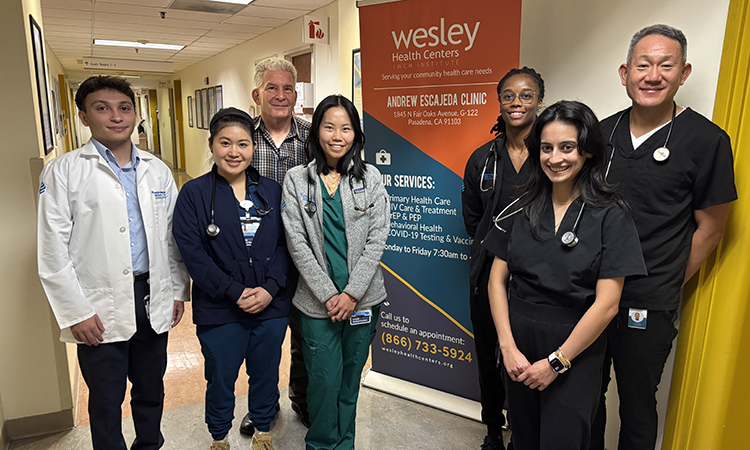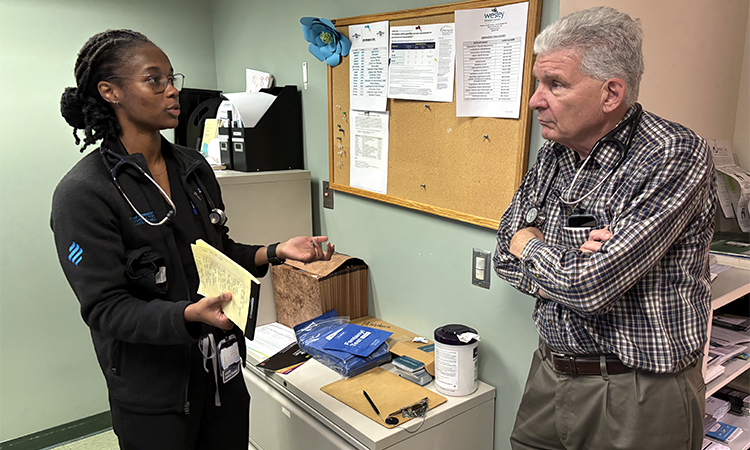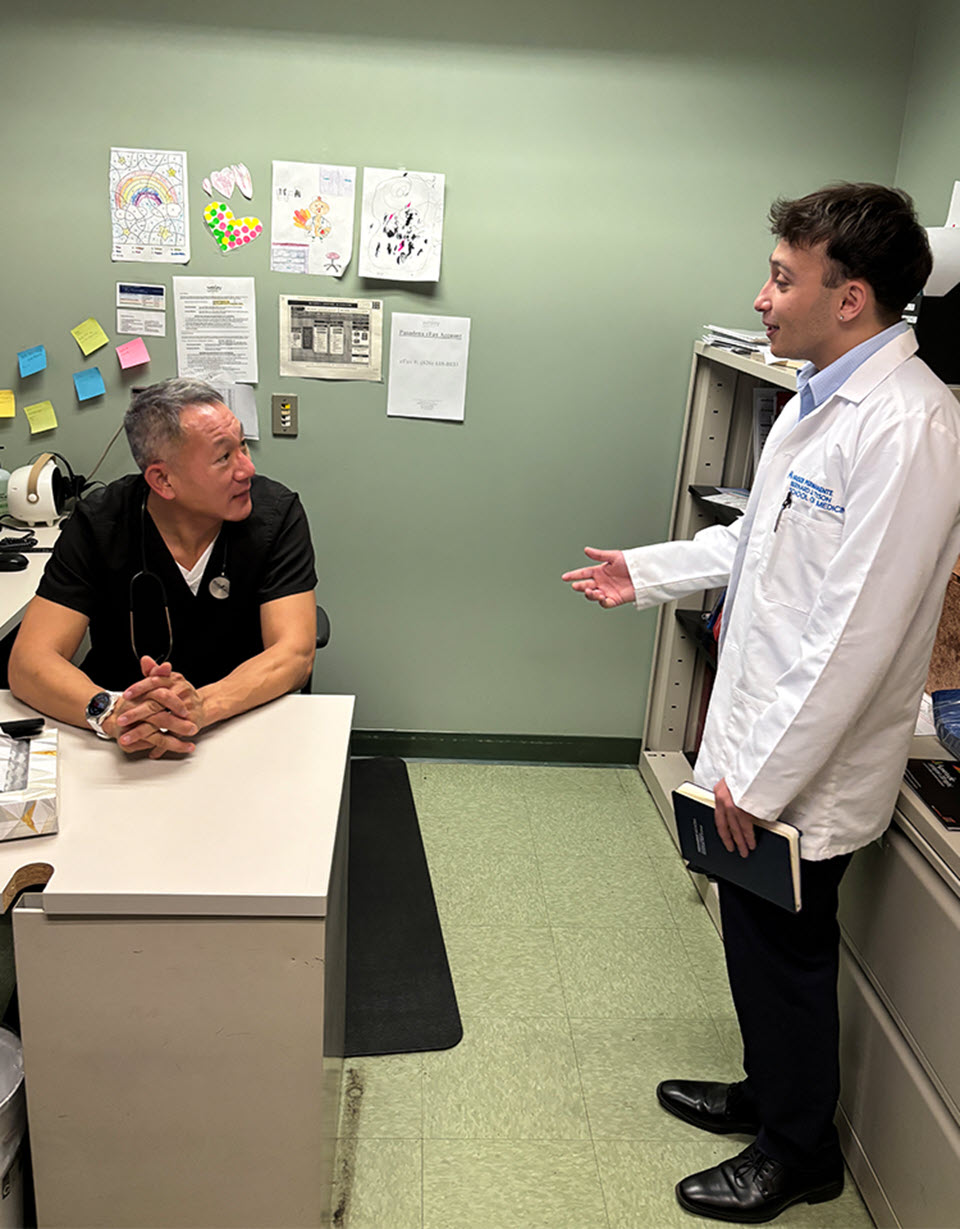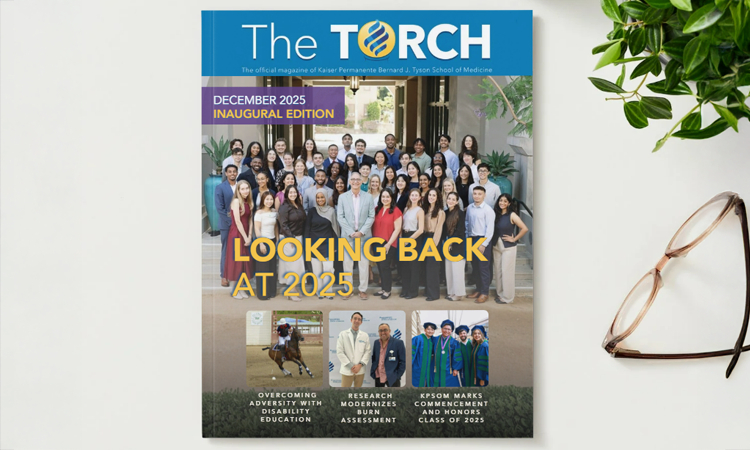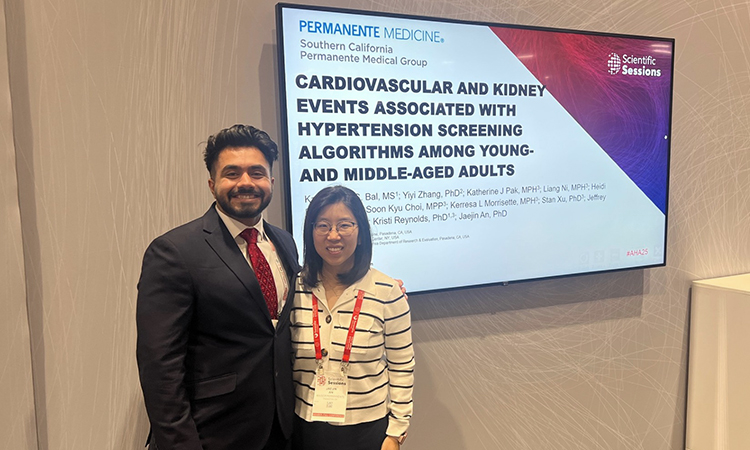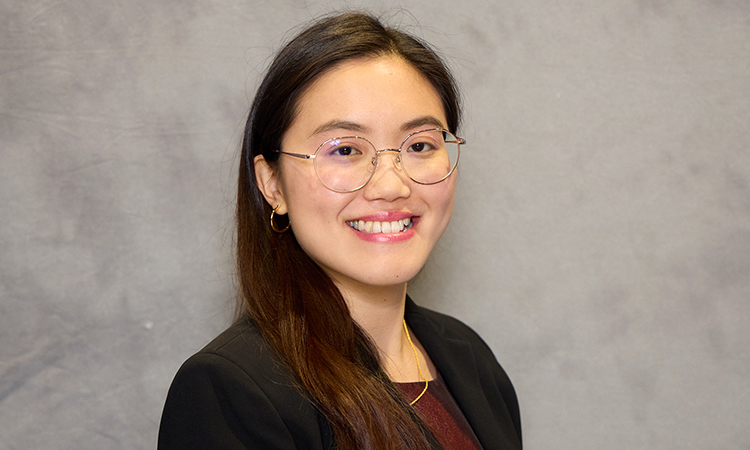Kaiser Permanente Bernard J. Tyson School of Medicine (KPSOM) has launched a new Student-Run Clinic in partnership with Wesley Health Centers (JWCH), serving underresourced neighborhoods in northern Pasadena. This initiative, held twice monthly at the Andrew Escajeda Comprehensive Care Services Clinic, brings together dedicated medical students and volunteer faculty to provide accessible care while enriching medical education through real-world experience.
The Student-Run Clinic was created to address a crucial gap in healthcare access for Pasadena’s marginalized populations. Unlike the typical Kaiser Permanente patients that the students see in their Longitudinal Integrated Clerkships (LICs)—often insured, employed, and comfortable with technology —this clinic’s patients are diverse, including uninsured individuals and many facing complex social, economic, and health challenges.
“All students come into medical school eager and excited to serve and take care of patients,” said Dr. John Su, KPSOM Assistant Professor of Health Systems Science and a faculty adviser to the clinic. “Most schools don't provide any clinical exposure until the third year. But at our school, instead of waiting until the third year, they get to start with one half day of clinical care in the first year and are fully immersed in clinical care and learning in the second year as part of the LIC. The Student-Run Clinic is another opportunity for them to get involved, providing care to an underserved community where their school is based. It’s a different system and model, and being student-run and student-initiated, there are opportunities for leadership and mentorship.”
